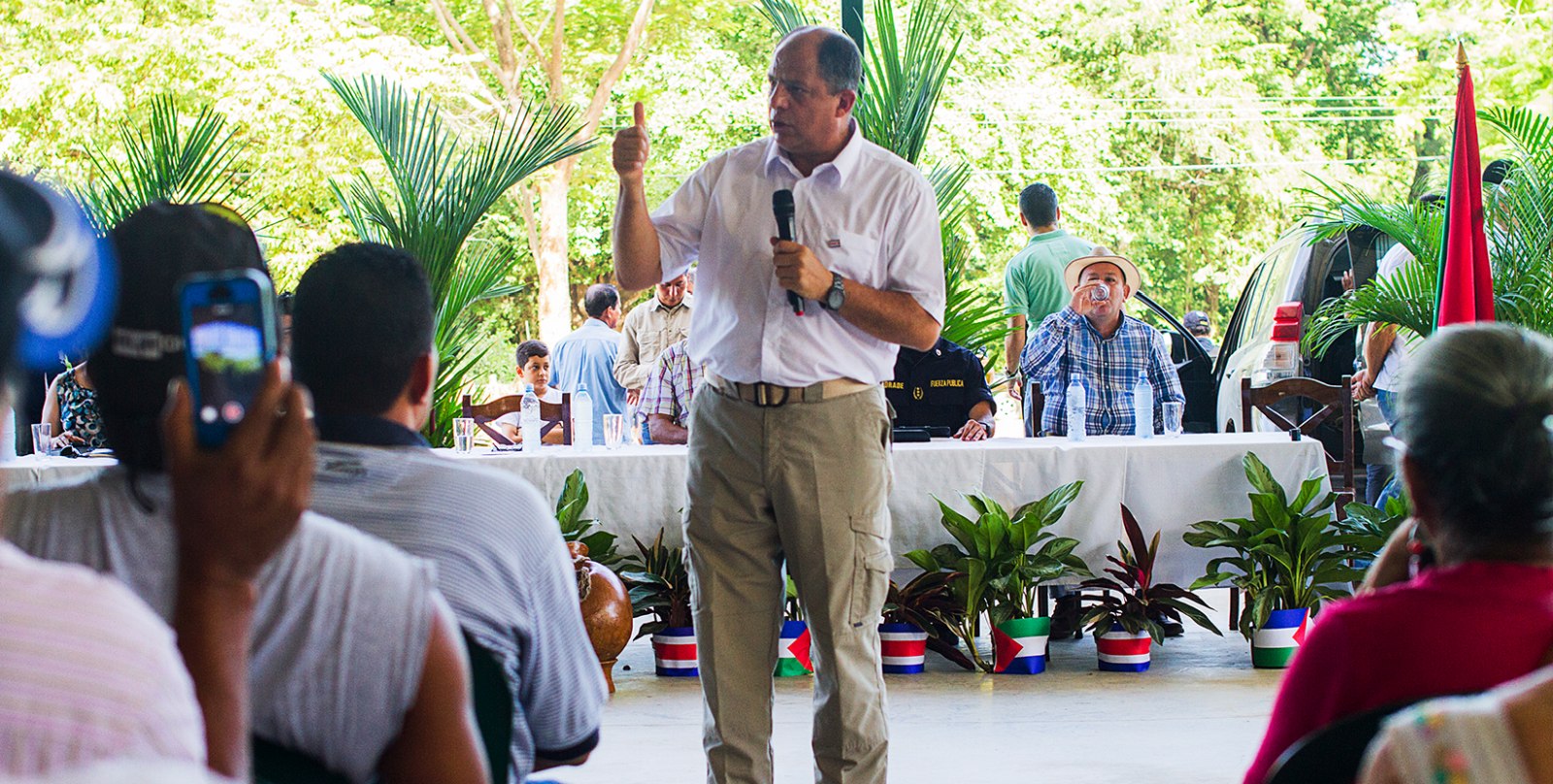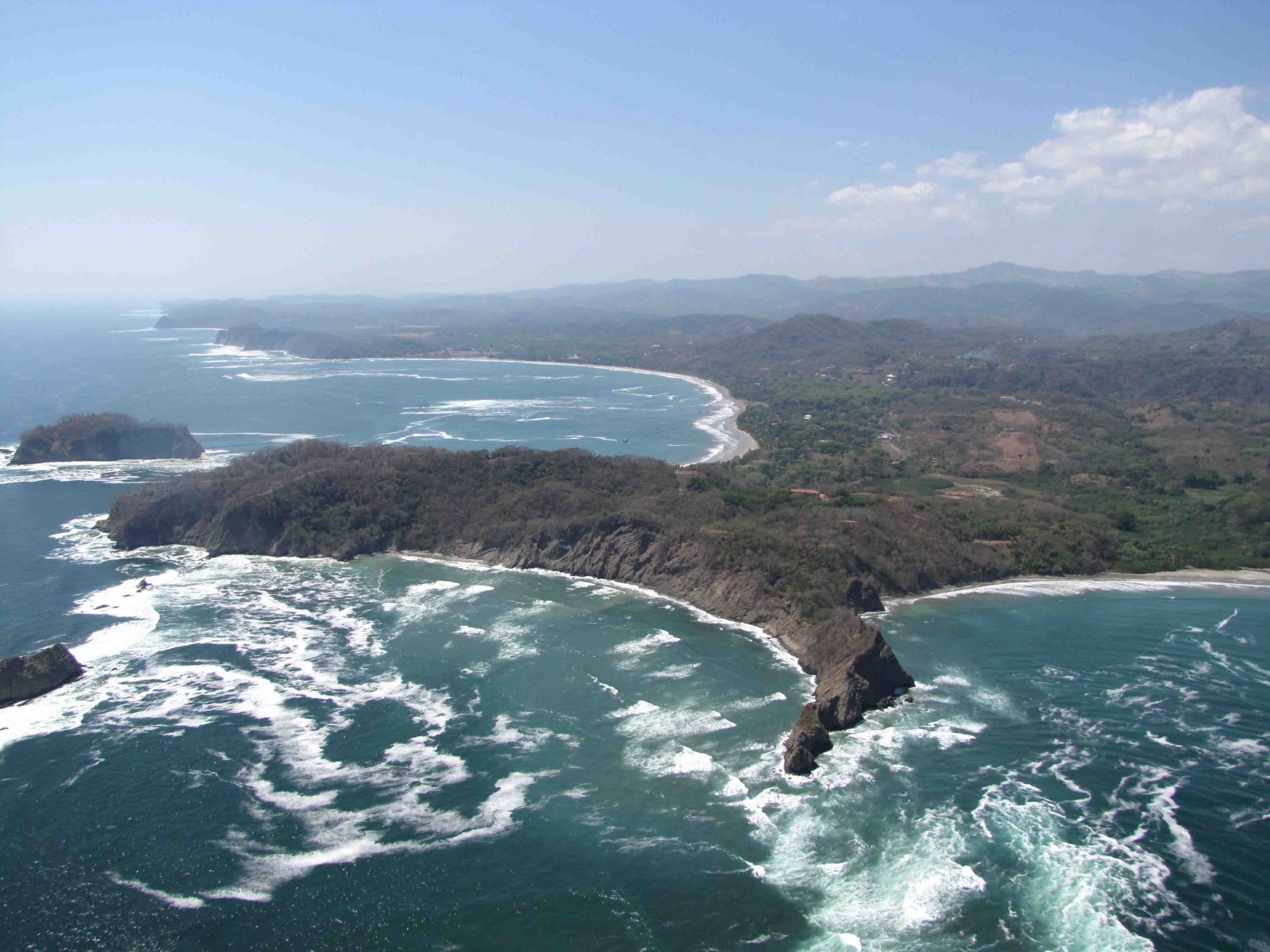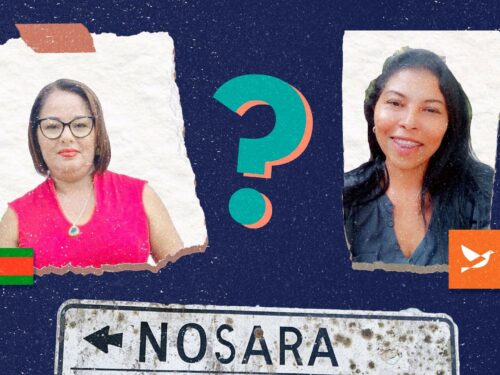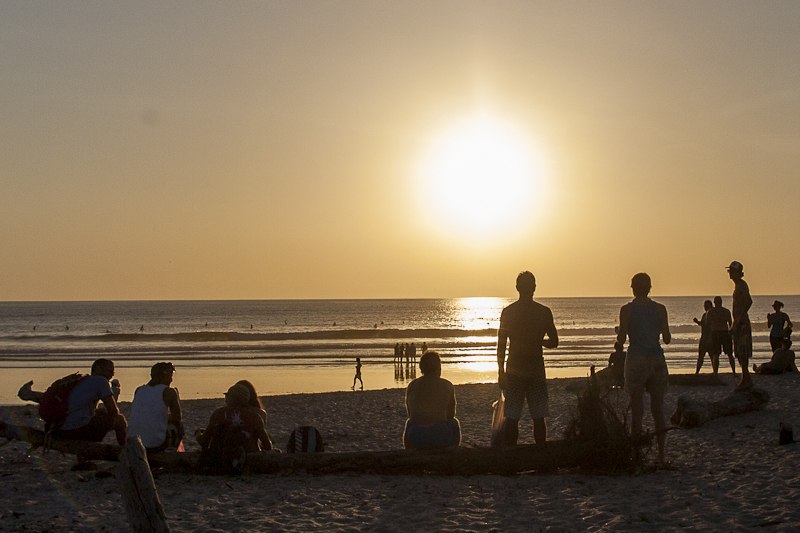
For more than 10 years, the town of Nosara has been told that route 160 will be paved “next year.” This year the promise is the same, though in this case the promise was made by the president of Costa Rica in front of hundreds of Nosarans. On July 23, President Luis Guillermo Solis committed to repairing and paving route 160 in the multipurpose hall in Nosara.
Solis, who heard reports of residents’ health problems due to dust produced along the route during the dry season, gave a timeline for the intervention, in phases, of the 30 kilometers between Nosara and Samara. He outlined a plan first to make it passable, follow up with maintenance and finally pave it.
Although the chief executive admitted that building and paving the route will not be an easy job, he assured that the first stage will be maintenance and that urgently needed intervention on the road is already moving forward.
Heavy machinery from the Ministry of Public Works and Transportation (MOPT – Ministerio de Obras Públicas y Transportes) and the National Roadways Council (CONAVI – Consejo Nacional de Vialidad) are already performing maintenance works on the route in Nosara.
Carlos Segnini, Minister of MOPT confirmed the president’s words and commented that he as well as other officials from CONAVI and MOPT toured the route between Samara and Nosara during the week of July 25. He admitted that, “This is not a highway, but rather a pathway,” due to the road’s deplorable condition.
Segnini confirmed to The Voice of Guanacaste that he has already issued the order to CONAVI to invest ₡150 million ($280,000) in immediate intervention on the route to make it passable.
“With 150 million [colones], what we’ll do is a scraping, eliminating holes and applying gravel. I hope to move forward with it by September,” explained the minister.
In addition, the chief indicated that the second phase is already in process, which would be a continuation of the route’s maintenance in December. “The request for bids is in process so that at the end of December another ₡229 million ($425,000) can be awarded for improvements in gravel and maintenance,” said Segnini.
On the other hand, the minister expressed that the third and final phase of paving is the most difficult of all, as it needs the most time, resources and above all, help from those who live along the highway.
“It’s a very complicated design because we have to raise [the highway] between a meter and a meter and a half, and after raising it, [the highway] will be like a dike, and that can flood residents’ homes [and properties], which means we have to widen the road, and to widen it, we need more land,” explained the chief.
According to Segnini, CONAVI is still developing a list of residents who live along the route to find out who will donate part of their land and where it will have to be expropriated. The company Consultopo S.A., based in San Isidro of Heredia, is responsible for completing the list. Consultopo S.A. has been working on the project since May 20, 2013.
Segnini explained that the funding for the project will be provided through a loan and that they have the president’s support. “We have to look for financing, either through a trust or a public loan from the BCIE [Central American Bank for Economic Integration] or the BID [Inter-American Development Bank]. It’s a project that would cost between $60 and $70 million; that is money that I have to search for but the president is going to help me,” he concluded.
Neither Solis nor Segnini gave a definite timeline for the start of the final paving phase, as that will depend on the amount of time the expropriation process lasts. However, the MOPT minister is optimistic that construction will finally start during 2015.







Comments